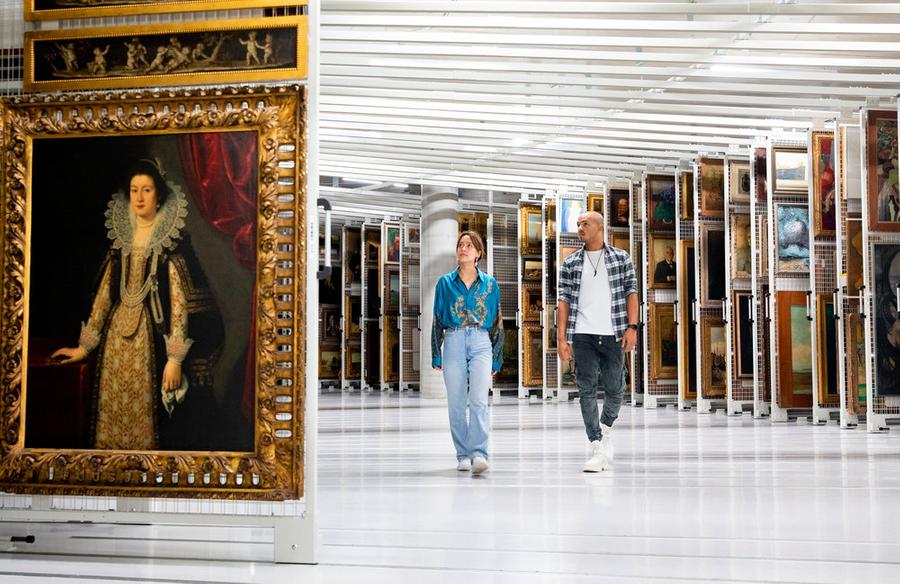Depot Boijmans Van Beuningen Innovates Museum Model in World First; Displays Entire Collection by Size and Climatic Requirements
- November 03, 2021 18:18


With Depot Boijmans Van Beuningen, a new all-access art museum and system of collection management debuts. The King of the Netherlands, Willem-Alexander, will open the Depot this week, with all 151,000 collection items—from Vincent van Gogh paintings to a Yayoi Kusama Infinity Mirror Room—on public display in a greenery-topped round repository next to the Boijmans museum’s original 1930s building in Rotterdam.
The idea of a new building to safeguard the art collection was first whispered about in 2004. After the first pile was sunk in March 2017, now, 4.5 years later, the building is completed: Depot Boijmans Van Beuningen in the Museum Park in Rotterdam will be opened by His Majesty the King on Friday November 5, with a public opening on November 6.

When the cellars under the museum became unsuitable for art storage due to flooding - it proved to be an opportunity for the city. With the arrival of the art depot - designed by MVRDV - the internationally renowned Boijmans Van Beuningen art collection and the care for these 151,000 objects will be made transparent under one roof, next to the museum building that is undergoing renovation.
Museums worldwide generally display an average of six to ten percent of the collection - the remaining ninety percent, and the work associated with conservation is hidden and sequestered. The depot breaks with this tradition of hiding and makes all of these invisible works of art visible; the model echoes changing views on collection management and is showcased in a pioneering building. Never before has accessible museum storage on this scale been combined with a view behind the scenes for the general public.




In addition to its role as the museum's engine room, the depot will also have a commercial function. Part of the building is leased as storage space for art from private collectors and for corporate collections such as KPN and Rabobank, or from collectors such as the Lakeside Capital Collection by Ali Keles. The tenants of these compartment can in turn open their depots to the public. Tenants within the depot are offered the same service and professionalism as the museum collection. The depot also contains a collection compartment where a few square metres, individual racks or shelves can be leased. The sixth floor, accessible via an express lift, is located at a height of approximately 35 metres and allows breathtaking views over the city. Here visitors will find restaurant Renilde with a roof terrace and the event space for hire Coert. The restaurant and event space are named after the Boijmans curator (Renilde Hammacher) from the 1960s and 1970s and the Boijmans director (Coert Ebbinge Wubbe) of that time. A depot store with products related to the depot is also part of the experience. The depot store was designed by John Körmeling.










100x100_c.jpg)











